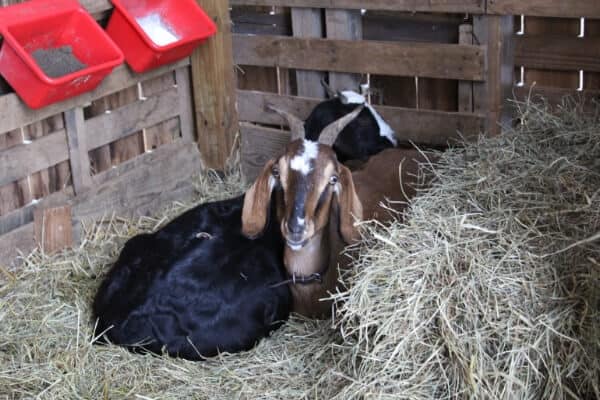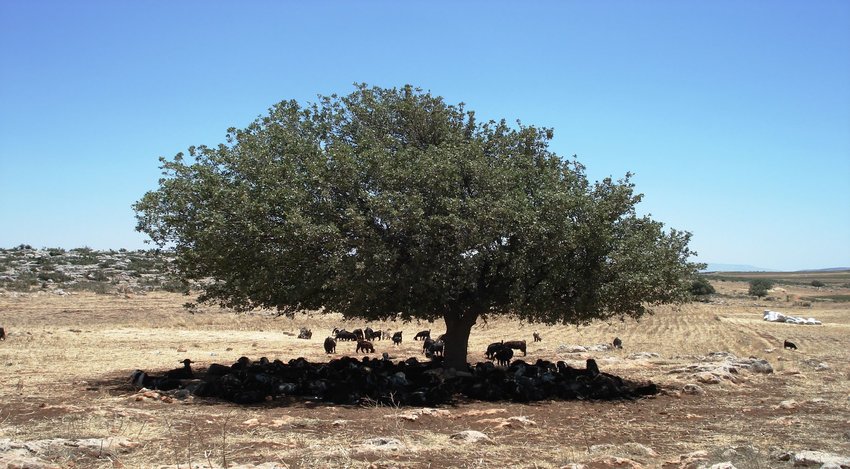Seasonal Herd Management
A good goat keeper adapts their management to the changing seasons, anticipating needs for feed, shelter, and health care throughout the year.
Winter Checklist
The primary goals for winter are to keep goats warm, dry, and well-fed, as they burn extra calories to maintain body temperature.
- Shelter: Ensure the barn is draft-free at goat level. Use a deep litter bedding method with straw or pine shavings to generate compost heat.
- Water: Use heated buckets or a tank de-icer. Goats will not drink enough if their water is icy, which can lead to dehydration and other health issues.
- Feed: Increase hay rations, especially for pregnant does. Monitor Body Condition Score (BCS) to ensure they aren't losing weight.
- Health: Watch for signs of respiratory illness (coughing, runny nose). Check for external parasites like lice, which thrive in winter coats.

Goats do NOT need a heated or insulated shelter. They stay warm by growing a thick undercoat of cashmere and cuddling together. An insulated barn can trap ammonia from urine to dangerous levels before a human can even smell it, causing severe lung damage. Good ventilation and dry bedding are far more important and safer than heat.
Spring Checklist
Spring brings new life, lush pasture, and the peak season for parasites.
- Kidding Season: Be prepared with a clean kidding stall and your emergency kit. This is the busiest time of year!
- Pasture Management: Introduce goats to lush spring grass gradually over a week to prevent bloat. Start with just an hour of grazing per day. Always provide free-choice baking soda to help them regulate their rumen pH and prevent acidosis.
- Parasite Patrol: Worm larvae thrive in the cool, moist conditions of spring. Begin regular FAMACHA checks and plan to run fecal tests to stay ahead of parasite loads.
- Hoof Trimming: Soft, wet ground means hooves won't wear down naturally. Schedule a herd-wide trim.
Summer Checklist

Heat stress and fly control are the main challenges of summer.
- Shade and Water: Goats must have access to shade at all times. Provide multiple water sources and scrub buckets often to prevent algae growth.
- Heat Stress: Signs include rapid panting, lethargy, and decreased appetite. Offer electrolytes in a separate bucket of water during extreme heat waves.
- Fly Control: Use fly traps, fly predators, or vet-approved repellents to keep flies from bothering your herd and spreading disease like pinkeye.
Fall Checklist
As the days shorten, the focus shifts to breeding season and preparing for the coming winter.
- Breeding Season (The Rut): Does will come into heat and bucks will be in full rut. Plan your breedings and keep meticulous records of dates.
- Health Checks: Perform a final herd health check before winter sets in. Check body condition, perform FAMACHA scores, and deworm if necessary.
- Barn Prep: Inspect the barn and fencing for any needed repairs. Stock up on hay and bedding for the winter months.